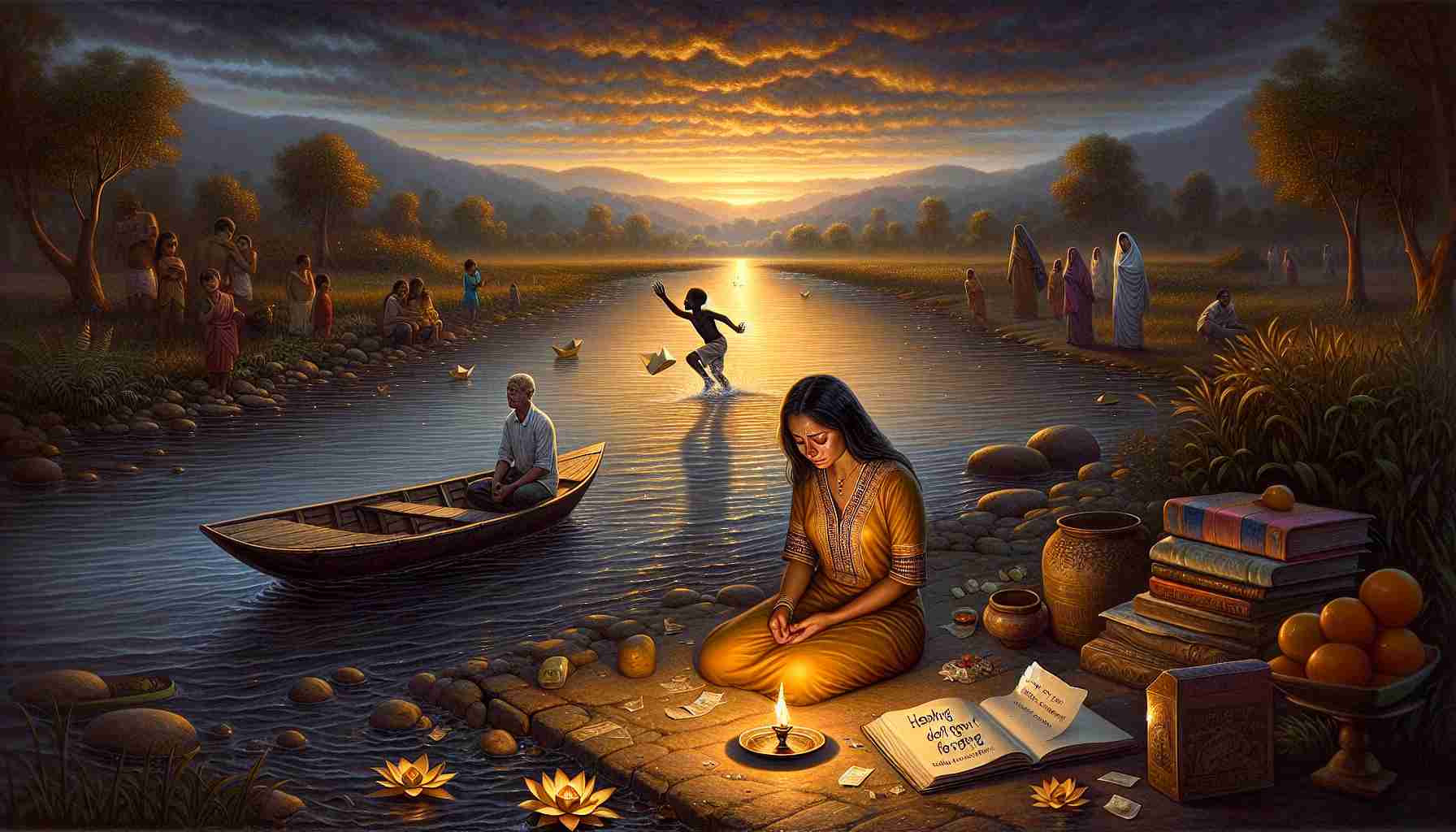

I am Kavita, a schoolteacher in a small village near Rishikesh. I still remember the morning I first felt like my heart had cracked wide open.
It had been one year since Shyam, my husband of ten years, passed during a sudden illness. Everyone said time would ease the pain, but the ache never really left. I taught my students by day, smiled for my neighbors, and lit the evening lamp before our little Ganesh murti—the small statue of the gentle, elephant-headed remover of obstacles—but inside, I felt hollow.
One evening, just before monsoon season, I sat on the edge of the Ganga—the sacred river that has witnessed generations of prayers and sorrows. I came there often, but never stayed long. That day, though, I didn’t rush to leave. I sat barefoot, letting my tears mix with the wind. A faint echo of a verse from the Bhagavad Gita came to me, one my father used to recite when storms hit his heart: “dukhesv anudvigna-manah sukhesu vigata-sprhah...” — “One who is undisturbed in sorrow and not attached in joy, such a person is wise and steady.”
I cried harder. I wasn’t steady. I was shattered. But somehow, remembering that verse didn’t shame me. It invited me. It said, “You’re allowed to feel this. And you can still heal.”
A little boy ran by me just then, chasing a paper boat that had drifted too far into the water. He stumbled and fell. I rushed over, brushing mud from his knees.
He looked up and simply said, “Thank you, didi,” and glanced at my tear-soaked face. “Don't be sad. The river takes sadness away. Amma says so.”
I smiled weakly, watching him run back to his family. I remembered what my grandmother once told me as she showed me how to light a diya—an oil lamp—on the riverbank: "Grief must first soften you before it can leave you. Let yourself be soft."
The Kena Upanishad says, “That which cannot be seen with the eyes, but by which the eyes see—that alone is Brahman.” I didn’t see a miracle, but I began to sense the Divine—not fixing me, but quietly holding me as I fell apart.
That night, I lit a diya for Shyam. But I also lit one for myself—for the woman learning to carry grief without letting it drown her.
The next morning, in class, while teaching the Ramayana to my students—the part where Sita endures her exile with quiet strength—I realized her story stirred something new in me. Pain could teach grace. Not all wounds are meant to be erased. Some become places where light enters, slowly.
Later, I wrote in my journal: Healing doesn’t mean forgetting. It means walking softly with the ache and still reaching for the Divine.
And that is how I began to heal when I thought my heart was too broken.
I am Kavita, a schoolteacher in a small village near Rishikesh. I still remember the morning I first felt like my heart had cracked wide open.
It had been one year since Shyam, my husband of ten years, passed during a sudden illness. Everyone said time would ease the pain, but the ache never really left. I taught my students by day, smiled for my neighbors, and lit the evening lamp before our little Ganesh murti—the small statue of the gentle, elephant-headed remover of obstacles—but inside, I felt hollow.
One evening, just before monsoon season, I sat on the edge of the Ganga—the sacred river that has witnessed generations of prayers and sorrows. I came there often, but never stayed long. That day, though, I didn’t rush to leave. I sat barefoot, letting my tears mix with the wind. A faint echo of a verse from the Bhagavad Gita came to me, one my father used to recite when storms hit his heart: “dukhesv anudvigna-manah sukhesu vigata-sprhah...” — “One who is undisturbed in sorrow and not attached in joy, such a person is wise and steady.”
I cried harder. I wasn’t steady. I was shattered. But somehow, remembering that verse didn’t shame me. It invited me. It said, “You’re allowed to feel this. And you can still heal.”
A little boy ran by me just then, chasing a paper boat that had drifted too far into the water. He stumbled and fell. I rushed over, brushing mud from his knees.
He looked up and simply said, “Thank you, didi,” and glanced at my tear-soaked face. “Don't be sad. The river takes sadness away. Amma says so.”
I smiled weakly, watching him run back to his family. I remembered what my grandmother once told me as she showed me how to light a diya—an oil lamp—on the riverbank: "Grief must first soften you before it can leave you. Let yourself be soft."
The Kena Upanishad says, “That which cannot be seen with the eyes, but by which the eyes see—that alone is Brahman.” I didn’t see a miracle, but I began to sense the Divine—not fixing me, but quietly holding me as I fell apart.
That night, I lit a diya for Shyam. But I also lit one for myself—for the woman learning to carry grief without letting it drown her.
The next morning, in class, while teaching the Ramayana to my students—the part where Sita endures her exile with quiet strength—I realized her story stirred something new in me. Pain could teach grace. Not all wounds are meant to be erased. Some become places where light enters, slowly.
Later, I wrote in my journal: Healing doesn’t mean forgetting. It means walking softly with the ache and still reaching for the Divine.
And that is how I began to heal when I thought my heart was too broken.